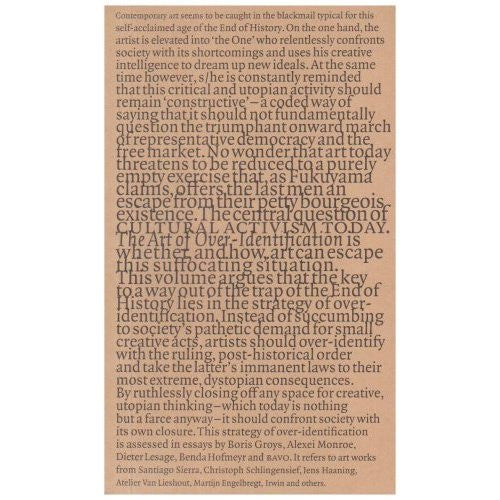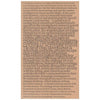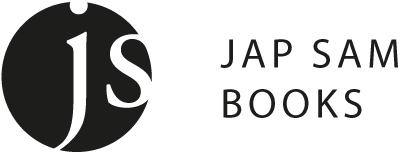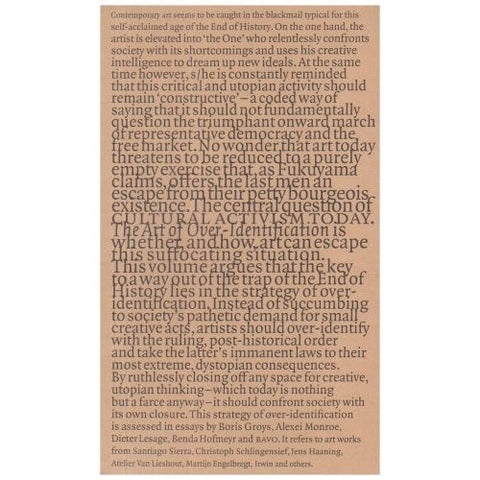Your cart is currently empty!
Cultural Activism Today. The Art of Over-Identification
+++ +++
+++BAVO / Gideon Boie, Matthias Pauwels [eds]+++
978-90-5973-061-8 [episode]
Niels Schrader
128
12 x 20 cm
Paperback
Available in English
This publication has been made possible with financial support from the Jan van Eyck Academy, the Flemish Authorities and the Mondriaan Foundation.
Contemporary art seems to be caught in the blackmail typical for this self-acclaimed age of the End of History. On the one hand, the artist is elevated into 'the One' who relentlessly confronts society with its shortcomings and uses his creative intelligence to dream up new ideals. At the same time however, s/he is constantly reminded that this critical and utopian activity should remain 'constructive' – a coded way of saying that it should not fundamentally question the triumphant onward march of representative democracy and the free market. No wonder that art today threatens to be reduced to a purely empty exercise that, as Fukuyama claims, offers the last men an escape from their petty bourgeois existence.
The central question of Cultural Activism Today. The Art of Over-Identification is whether, and how, art can escape this suffocating situation. This volume argues that the key to a way out of the trap of the End of History lies in the strategy of over-identification. Instead of succumbing to society's pathetic demand for small creative acts, artists should over-identify with the ruling, post-historical order and take the latter's immanent laws to their most extreme, dystopian consequences.
By ruthlessly closing off any space for creative, utopian thinking – which today is nothing but a farce anyway – it should confront society with its own closure. This strategy of over-identification is assessed in essays by Boris Groys, Alexei Monroe, Dieter Lesage, Benda Hofmeyr and BAVO.
€21.50
Cultural Activism Today. The Art of Over-Identification
€21.50
Architecture / Art / Theory
978-90-5973-061-8 [episode]
Niels Schrader
128
12 x 20 cm
Paperback
Available in English
This publication has been made possible with financial support from the Jan van Eyck Academy, the Flemish Authorities and the Mondriaan Foundation.
Contemporary art seems to be caught in the blackmail typical for this self-acclaimed age of the End of History. On the one hand, the artist is elevated into 'the One' who relentlessly confronts society with its shortcomings and uses his creative intelligence to dream up new ideals. At the same time however, s/he is constantly reminded that this critical and utopian activity should remain 'constructive' – a coded way of saying that it should not fundamentally question the triumphant onward march of representative democracy and the free market. No wonder that art today threatens to be reduced to a purely empty exercise that, as Fukuyama claims, offers the last men an escape from their petty bourgeois existence.
The central question of Cultural Activism Today. The Art of Over-Identification is whether, and how, art can escape this suffocating situation. This volume argues that the key to a way out of the trap of the End of History lies in the strategy of over-identification. Instead of succumbing to society's pathetic demand for small creative acts, artists should over-identify with the ruling, post-historical order and take the latter's immanent laws to their most extreme, dystopian consequences.
By ruthlessly closing off any space for creative, utopian thinking – which today is nothing but a farce anyway – it should confront society with its own closure. This strategy of over-identification is assessed in essays by Boris Groys, Alexei Monroe, Dieter Lesage, Benda Hofmeyr and BAVO.




